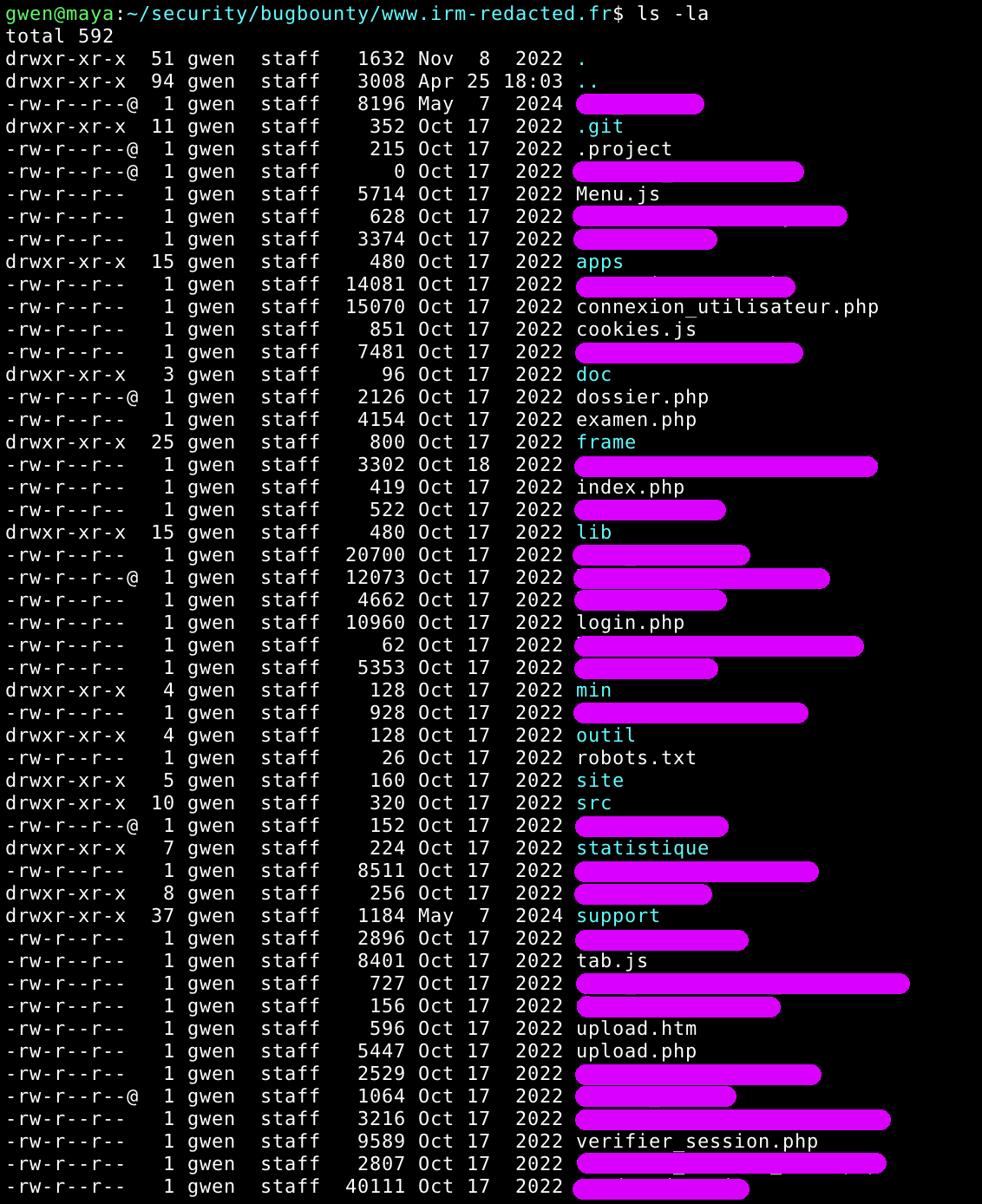Analysis of a critical french medical application
During my regular activities as a bug bounty hunter and security auditor for sensitive institutions, I came across a healthcare application called OptiMed (redacted), developed by Synaptek Digital (redacted), and used in numerous medical imaging centers in France. Unfortunately, this software demonstrates a catastrophic level of security, putting millions of sensitive medical records at risk.
Introducing OptiMed
According to the vendor’s website:
Synaptek Digital offers a fully integrated global solution covering all the needs of an imaging center or department.
OptiMed handles medical exams like CT scans and MRIs, with multiple user roles: patients, physicians, administrative staff, system admins, etc.
Still on their website:
Synaptek Digital has been an expert in the interoperability and security of healthcare information systems for over 10 years.
However, in reality the implementation is a real security nightmare.
Critical issues
Source code leak
.git directory was publicly accessible at the root of the web portal:
https://www.irm-redacted.fr/.git/
Problem when this happens, most of the time the source code of the application can be retrieved. Using some Git-Fu and hacking tools, I quickly got everything.
Directories and sub, PHP files, hidden files, config files... not a single file was missing and more the source code was intact.
According to the mess in the root directory, I already knew this would be severe. Time for a "serious" code audit.

Secrets
Basically a huge grep at the root directory will output those sensitive informations.
Result was unexpected (well, not really) as I got some nice hits:
ftp/smtp/bdd credentials, admin credentials and more.



Massive SQL injections
Randomly opening PHP files to check the quality on the code, a piece of s**t jumped into my eyes. Most pages contained unfiltered SQL queries, clearly lacking input validation.
$lastname = isset($_POST['nom']) ? $_POST['nom'] : "";
$firstname = isset($_POST['prenom']) ? $_POST['prenom'] : "";
$email = isset($_POST['email']) ? $_POST['email'] : "";
$request = "SELECT * FROM radio ";
$request.= " WHERE lastname='$lastname' ";
$request.= " AND firstname='$firstname' ";
$request.= " AND email='$email' ";
$result = $mysql->query($request);
These are classic SQL Injection vulnerabilities that can allow:
- Data extraction
- Authentication bypass
- Admin access
Passwords
Exploiting one of the numerous SQL injection in order to check how the database looked like.
I triggered SQLMap to grab some informations about the structure of the database when the table utilisateur catched my attention.

Passwords were obviously stored using a weak hasing algorithm. With the helps of hashes.com I could get some passwords decrypted in a second:

administrateur password retrieved, admin panel unlocked!
Arbitrary file upload
An arbitrary file upload vulnerability happens when a web application allows users to upload any file without proper checks. Attackers can exploit it to upload malicious files like web shells, leading to remote code execution, data theft, or server compromise.
Several unprotected file upload scripts like this one were available in the app, deadly.
$uploadDir = "./";
if(isset($_FILES['FileToImport']))
{
$fichier = $uploadDir.basename($_FILES['FileToImport']['name']);
if(move_uploaded_file($_FILES['FileToImport']['tmp_name'], $fichier)) {
echo 'Upload effectué avec succés !<br>';
}
else {
echo 'Echec de l\'upload !<br>';
return;
}
System interaction
At worst, command injection vulnerabilities allows arbitrary execution of system commands from user input:
$PID = $_POST['PID'];
exec("taskkill /F /PID $PID" );
An attacker could then inject any command to takedown the system.
Some critical admin tools were also publicly available without any authentication system.
No need to say what would happen if a malicious user found this:

A huge attack surface
How many medical centers were using OptiMed, how many instances have been deployed and how many users would have been impacted by a leak? Using some dorks on Shodan, including the good old favicon hash trick, I discovered about 190 medical centers in France and a few in Switzerland that were using this application.


Finally all added, about 28 millions of patients and 77 millions of results of medical exams. This was huge!
What this reveals
As an old school web developper and now security expert I can easily understand where the problems come from:
- No input validation
- No privilege separation
- Years of accumulated bad practices
- No code reviews, no security test
- Countless developers with no security knowledge
At that point we can just say that the software editor doesn’t care as there was absolutely no effort put in security at all.
What’s next?
In 20222, I reported the situation to ANSSI - France’s national cybersecurity agency - following responsible disclosure principles.
I did not access any personal data, nor did I modify, delete, or interfere with any system elements. My goal was purely to prevent a disaster.
As far as I can see now in 2025, many medical centers have change the software, for those who are still using it, I remain available to both the authorities and the vendor to help address this issue.
Conclusion
Security in medical applications cannot be optional. It must be integrated from day one, embedded in development practices, and regularly audited.
In a world where health data is a critical high-value target, OptiMed is a textbook case of what not to do.







